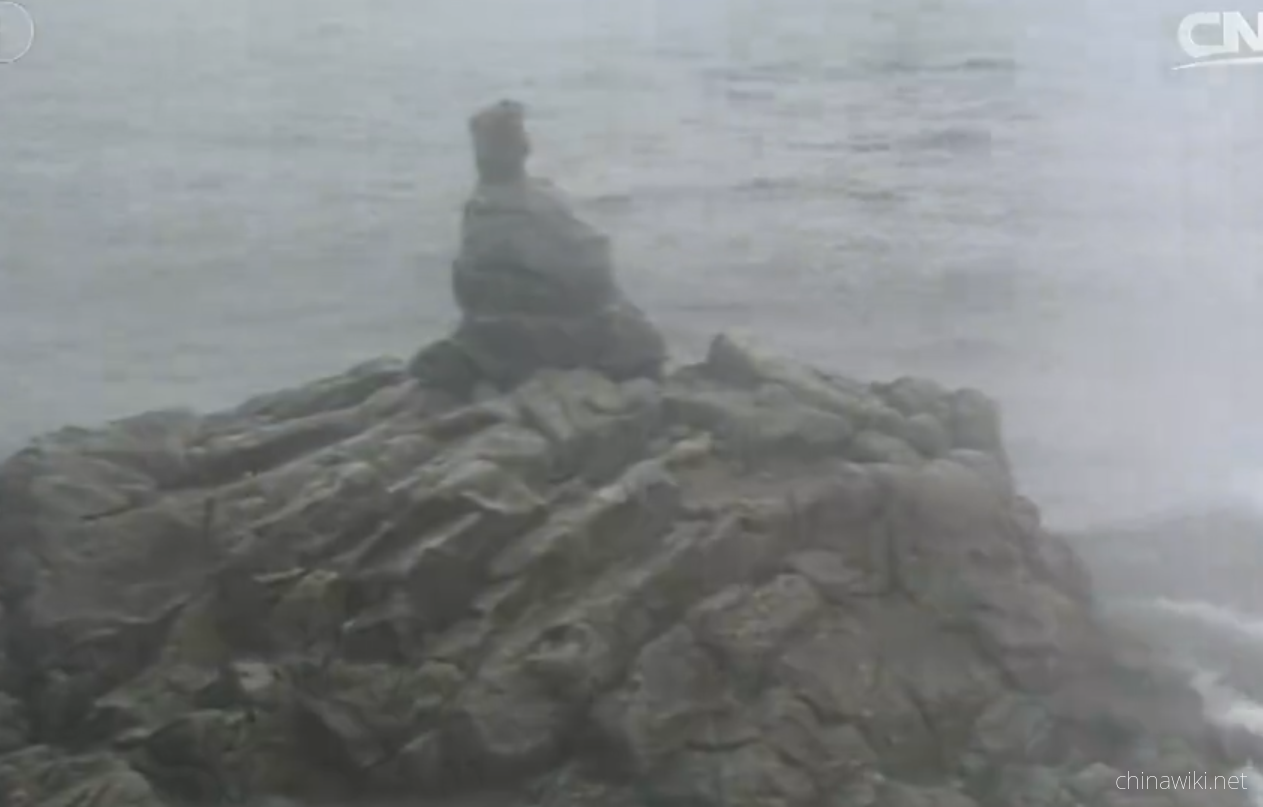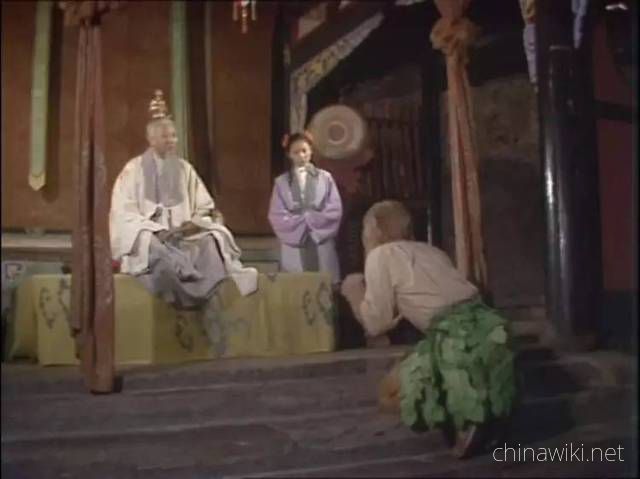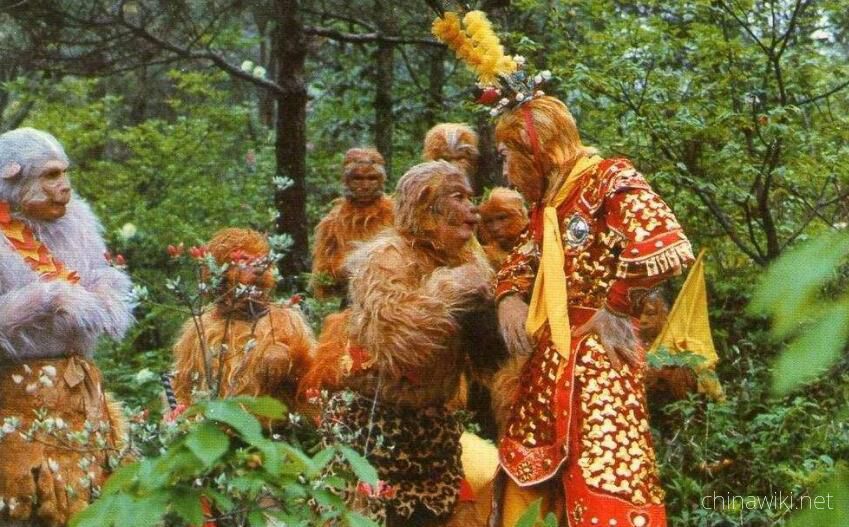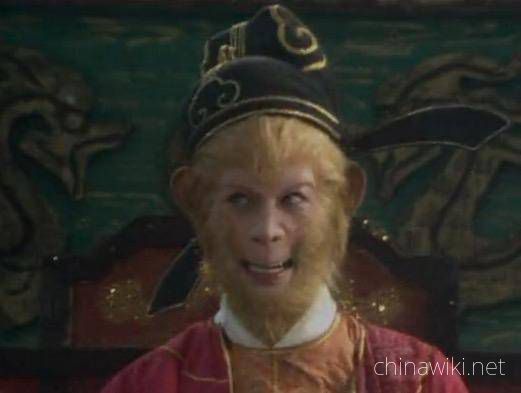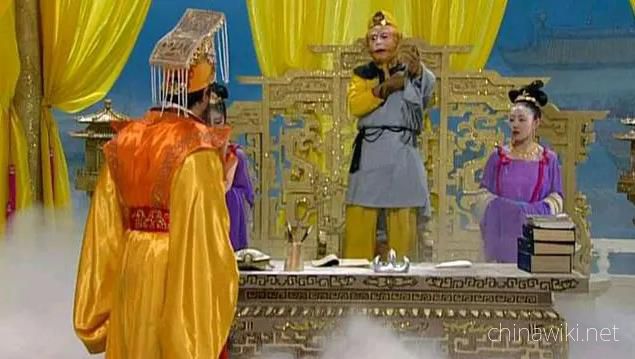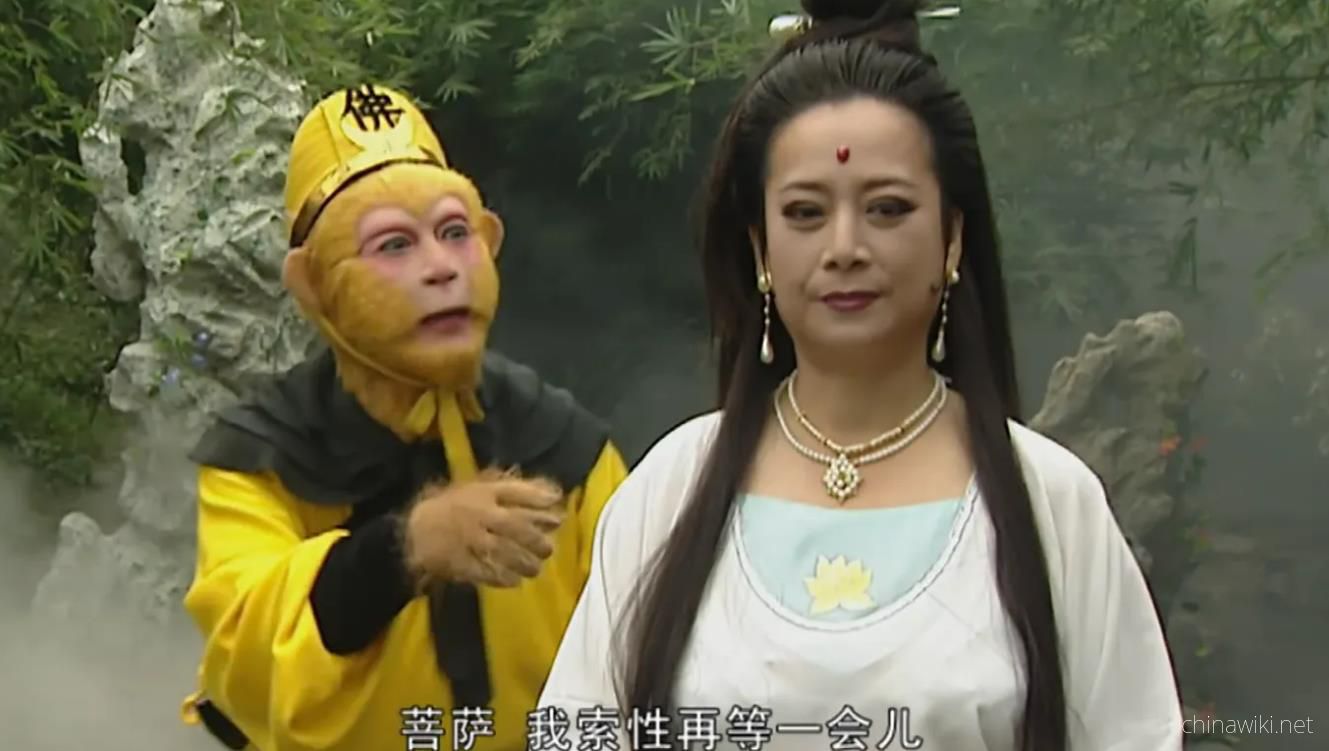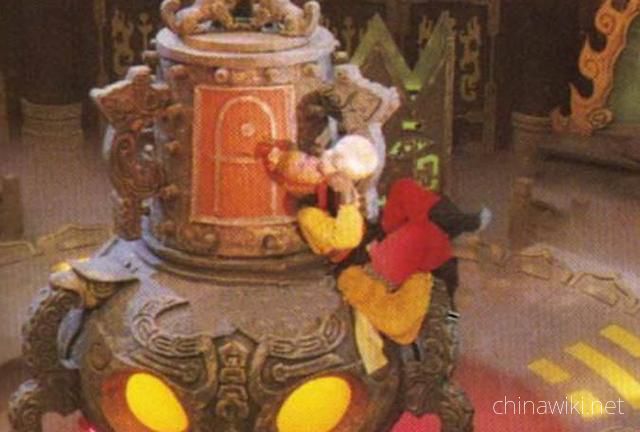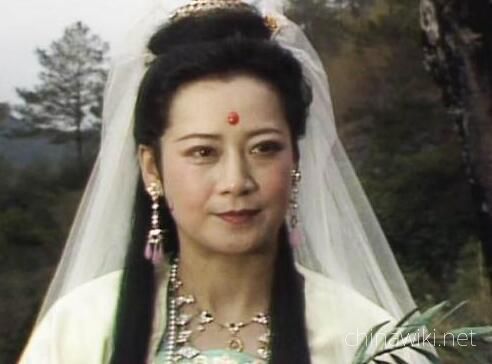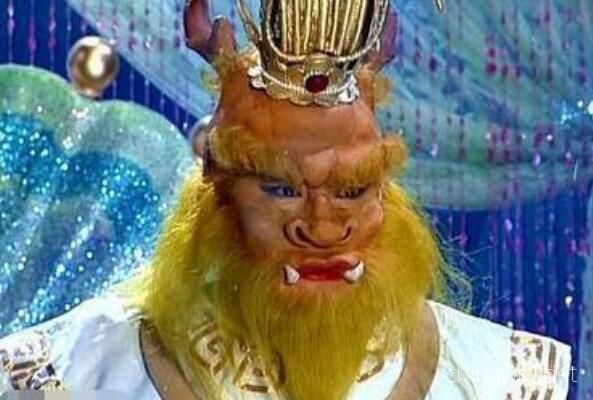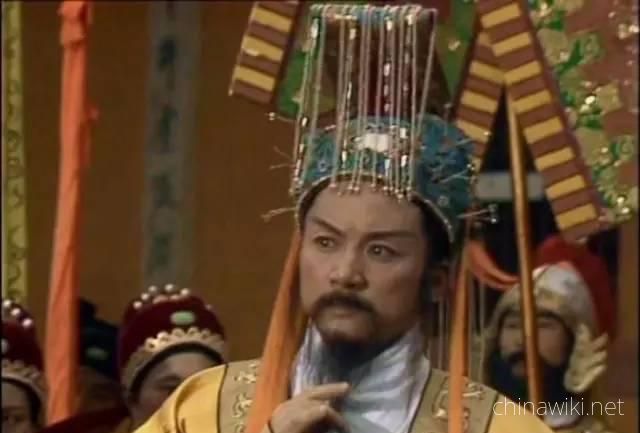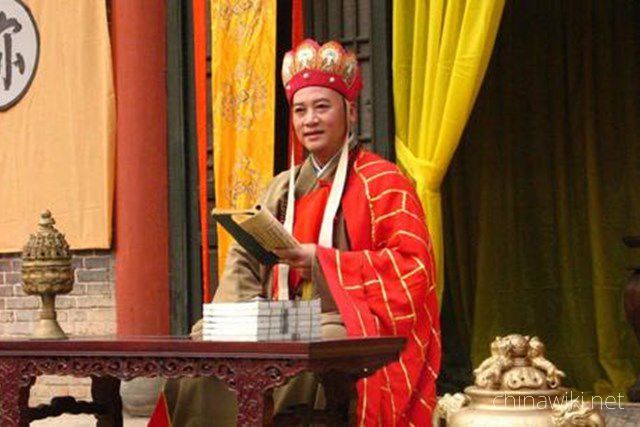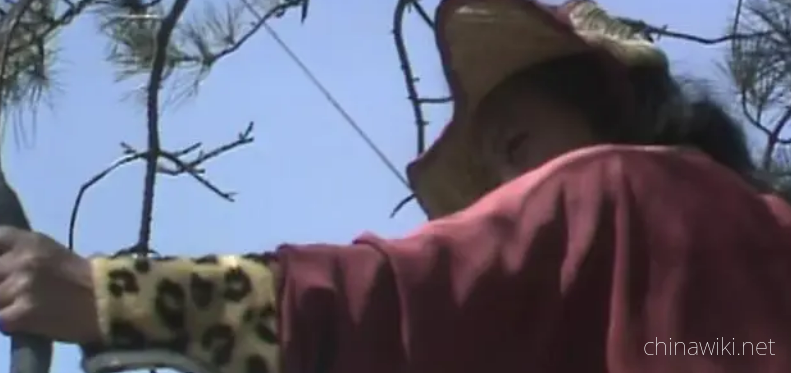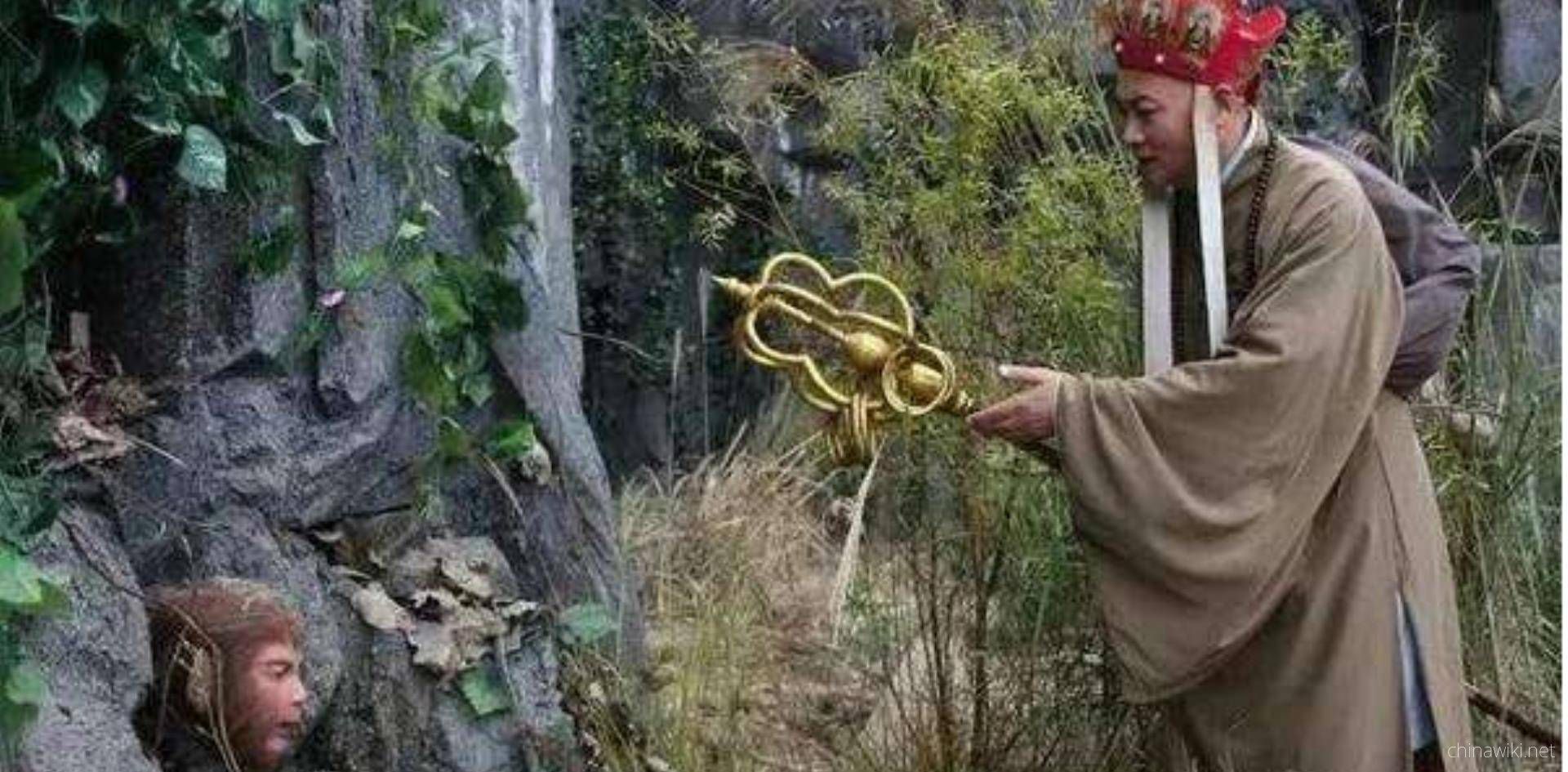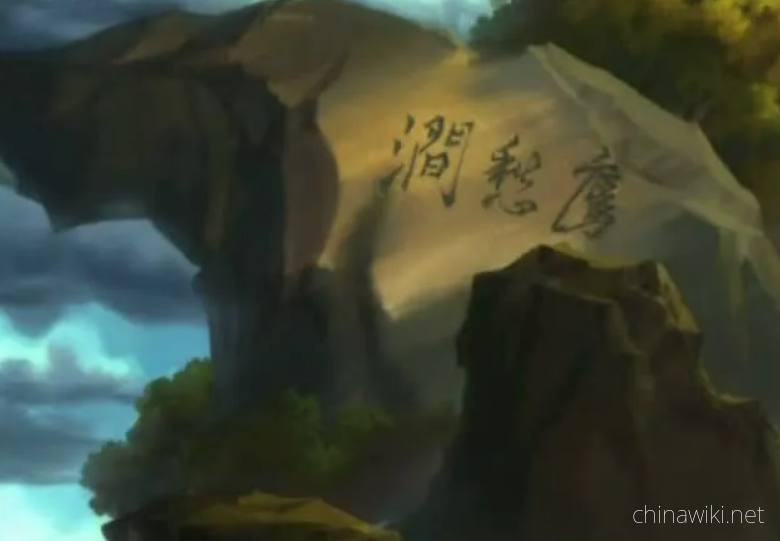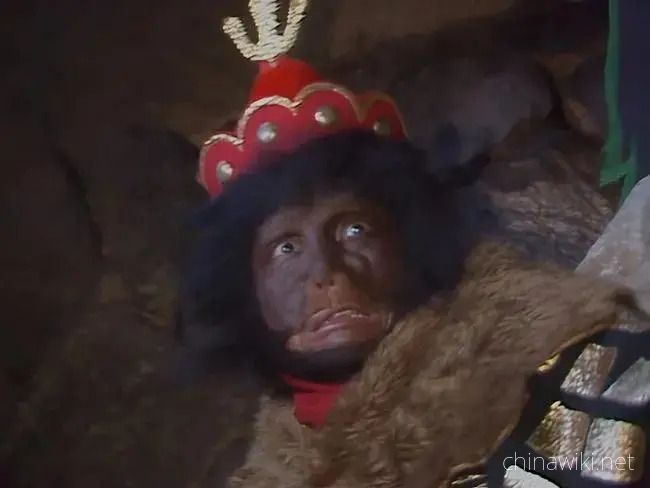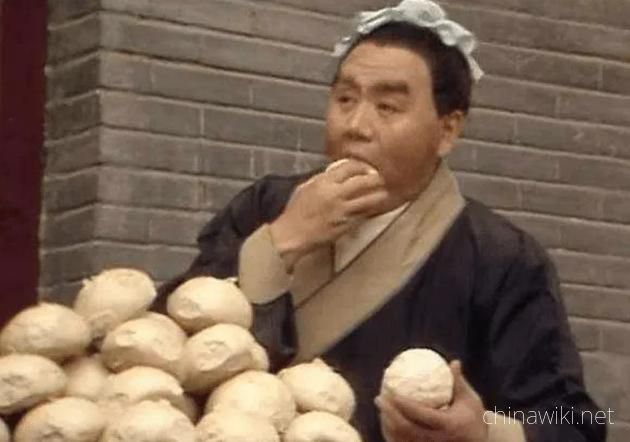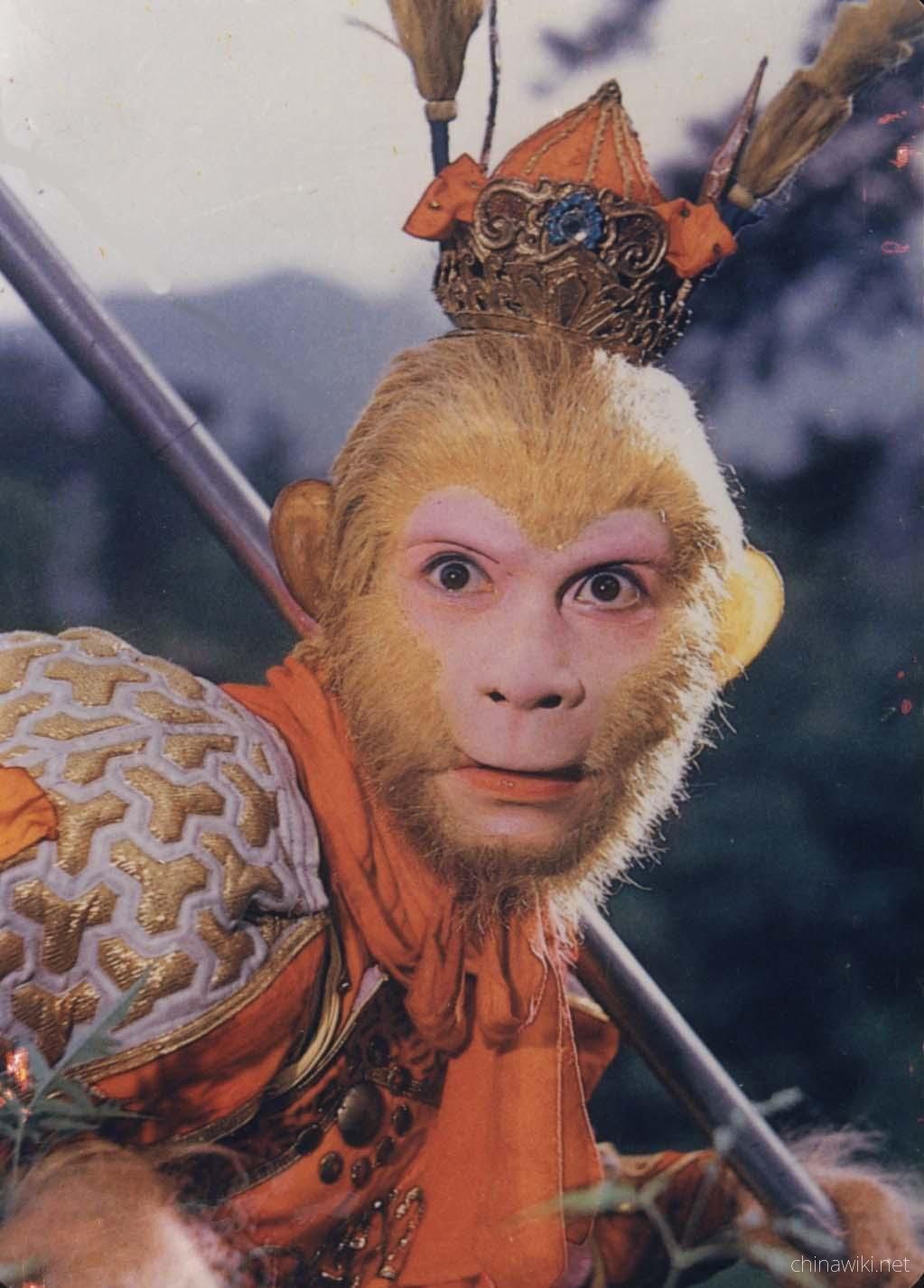The Journey to the West (Pilgrimage to the West)
Journey to the West is the first romantic novel written by Wu Chengen in the Ming Dynasty.
The novel mainly tells the story of Monkey King, who met Tang Monk, Zhu Bajie, Sha Monk and White Dragon Horse after he was born to learn skills with Bodhi and made a big noise in the Heavenly Palace. He went west to learn scriptures. He went through hardships and dangers along the way, subdued demons and eliminated demons, and went through ninety-nine eighty-one difficulties. Finally, he reached the western sky to see the Buddha, and finally the five saints came true. The novel is based on the historical event of "Xuanzang obtaining scriptures". The artistic processing of the author deeply depicts the social life of the people in the Ming Dynasty.
Journey to the West is a classic work of Chinese magic novels, reaching the peak of ancient romantic novels. It is also known as the four classical masterpieces of China together with Romance of the Three Kingdoms, The Water Margin and A Dream of Red Mansions. Journey to the West has been widely spread among the people since its inception, and various versions have emerged one after another. There were six kinds of publications in the Ming Dynasty, seven kinds of publications and transcripts in the Qing Dynasty, and thirteen kinds of lost versions recorded in ancient books. After the Opium War, a large number of Chinese classical literary works were translated into Western languages. Journey to the West gradually spread to Europe and America, and was translated into English, French, German, Italian, Spanish, sign language, Shih (Esperanto), Swahili (Swahili), Russian, Czech, Roman, Polish, Japanese, Korean, Vietnamese and other languages.
| Work name | Xi You Ji |
| Foreign name | The Journey to the West / Pilgrimage to the West |
| Alias of work | Oriental Legend |
| author | Wu Chengen |
| Creation era | the Ming dynasty |
| literary genre | novel |
| length | 870000 words, 100 times |
Journey to the West 1986 Chinese Online Watch:
https://tv.cctv.com/2012/12/03/VIDA1354534828865268.shtml
content validity
There is a flower and fruit mountain on the seashore of Aolai country in Dongsheng Shenzhou. There is a stone on the top of the mountain. Influenced by the essence of the sun and the moon, it gave birth to a stone monkey. Shi Monkey bravely explored the waterfall and the flying spring, and found the Water Curtain Cave, which was regarded as the "Monkey King" by monkeys. The Monkey King led a group of monkeys in the mountains for hundreds of years. He occasionally heard that the immortals, Buddhas, and saints could escape reincarnation and live as long as the mountains and rivers of heaven and earth. So he went across the sea alone on a raft, supported Buzhou in the south, arrived at Xiniu Hezhou, and finally stayed in the Xiyue Sanxing Cave on the Fangcun Mountain of Lingtai, where he was accepted by the founder Subhuti and named Sun Wukong. Wukong comprehended the wonderful principles of Che Bodhi in the Three Star Cave, learned seventy-two changes and the technique of wrestling with clouds, and returned to Huaguo Mountain to kill the devil devil in one fell swoop. The seventy-two hole demon kings of Huaguo Mountain, such as wolves, insects, tigers and leopards, came to honor him.Learn More>>
Catalogue of Works
Creation background
Story Source
The completion of Journey to the West is similar to the Romance of the Three Kingdoms and Outlaws of the Marsh, both of which have gone through a long process of accumulation and evolution. However, it is not consistent with the evolution characteristics of the former two: Romance of the Three Kingdoms and Outlaws of the Marsh are expanded and fabricated on the basis of historical reality, which is the combination of "reality" and "falsehood" and finally presents the false image of "truth" to the readers; However, the evolution process of Journey to the West is to constantly deify and hallucinate the real events in history, and finally present them to readers in the form of "illusion".
Xuanzang (602-664)'s Buddhist scripture collection was a real historical event in the Tang Dynasty. In the third year of Zhenguan period (629), he set out from Chang'an to pursue the true meaning of Buddhism, passed through more than 100 countries, and finally arrived in India after experiencing difficulties and obstacles. He studied there for more than two years and was the keynote speaker of a large Buddhist sutra debate, which was praised. In the 19th year of Zhenguan Period (645), Xuanzang returned to Chang'an and brought back 657 Buddhist scriptures. This extraordinary feat itself provided a vast world for people's imagination. Later, Xuanzang dictated what he had seen and heard about his journey to the West, and his disciple Bian Ji compiled a twelve volume book, A Tale of the Western Regions of the Tang Dynasty. But this book mainly tells about the history, geography and transportation of the countries Xuanzang saw on the road. Later, his disciples Huili and Yancong wrote the Biography of the Great Mercy Temple Tripitaka Dharma Master of the Tang Dynasty. In the process of praising the Master and promoting Buddhism, they also used exaggerated and apotheosized style to intersperse some strange stories from time to time, adding a lot of mythical flavor to Xuanzang's experience. As a result, the story of Buddhist scriptures became more and more popular in the society. Some notes in the late Tang Dynasty, such as "Du Yi Zhi" and "Da Tang Xin Yu", recorded the magical story of Xuanzang's Buddhist scriptures. Since then, the story of Tang monk's Buddhist scriptures has begun to spread among Chinese people.
In the Southern Song Dynasty, the scripture storytelling book "Tang Sanzang Scripture Collection Poetry" began to connect various myths with scripture collection stories. Monkey walkers appeared in the book. He used to be the "84 thousand bronze headed and iron forehead Macaque King of Ziyun Cave in Huaguo Mountain", who came to escort Sanzang as a scholar in white. He is very clever and resourceful. He killed the white tiger essence, subdued the nine kui dragons and subdued the sand gods all the way, making the cause of learning scriptures "successful". This is the beginning that the central figure in the story of Buddhist scriptures gradually changed from Xuanzang to Monkey King. The image of monkey walker originates from the mystery novels in ancient China. There are stories of white apes becoming refined and acting weird in Wu Yue Spring and Autumn, Sou Shen Ji, Bu Jiang General's Biography of White Apes and other books, while the Huai Vortex Water Monster Wuzhi Qi's "spirit changes quickly" and rebellious character in Li Gongzuo's Ancient Yue Du Jing are particularly close to the Monkey King in the legend of taking scriptures. The Shensha God in the book is the predecessor of the monk Sha in Journey to the West, but there is no Pig Bajie. By the Yuan Dynasty, a more complete and vivid "Journey to the West Pinghua" appeared, and its main plot was very close to "Journey to the West". At the end of the Yuan Dynasty and the beginning of the Ming Dynasty at the latest, there was a relatively complete story called Journey to the West.
background of times
In the era of Wu Chengen, Taoism became a vicious force, colluding with the rulers of the imperial court and losing the progressive significance of folk Taoism. In the middle of the Ming Dynasty, Taoists had reached the point of decadence and were despised by the people. For example, in the Jiajing period, Tao Zhongwen, a Taoist priest, was granted the title of Shaobao and Minister of the Ministry of Rites. He gained the favor of the emperor by curing diseases, eliminating demons, refining pills and praying, and colluded with Cui Wen, an eunuch, and Yan Song, a treacherous minister, to gain power. During the Jiajing period, Zeng Ming ordered the Taoism to prosper and destroy the Buddha, issued an edict to confiscate the assets of the Nengren Temple, drove out the Buddha statue in the palace, and later cancelled the official Buddha hall. During the Jiajing period, the construction of the Sanqing Palace was also carried out. The people suffer from hard labor, and the national treasury is empty. Wu Chengen borrowed Journey to the West as a satire.
Creative motivation
Before Wu Chengen created Journey to the West, the story of Tang Monk's taking scriptures from the west had long been popular among the people, but Wu Chengen's Journey to the West was not a simple patchwork of popular stories. In his creation, Wu Chengen has made a lot of changes to the folk stories. The Poems and Talks on the Tripitaka Sutra Collection of the Tang Dynasty is the most complete and earliest work to record the stories in Journey to the West. Wu Chengen has reconstructed the image of the monkey walker in white in the Poems and Talks on the Tripitaka Sutra Collection of the Tang Dynasty, and created the image of the Monkey King with blood and enthusiasm. Monkey walkers are devout Buddhist images who actively help monks to learn from the Western Heaven in order to achieve positive results, while Monkey King is a proud image who advocates freedom.
Some scholars once said: "The unsatisfied desire is the power of illusion. Every illusion contains the realization of a desire and makes the unsatisfied reality better." In his Journey to the West, Wu Chengen also has two unfulfilled wishes, one is that he failed to realize his wish of immortality, the other is that he failed to realize the value of individual life.
The first is good living. In Journey to the West, the birth of the stone monkey created by the author is a praise for the birth of a new life. The fourth time, from Monkey King's dissatisfaction with being granted the title of Little Official Bi Mawen to his satisfaction of being called the Great Sage of Heaven, Monkey King's own value was reflected. But this was just the Jade Emperor's appeasement for the safety of the heaven, and actually he did not attach importance to it. That's why the Peach Blossom Club did not give a good reception to Monkey King, which made Monkey King realize that the title of the Great Sage of the Heavens was just a hoax, so as to resist the unequal treatment of the Jade Emperor. The experience of Monkey King also reflects the fact that Wu Chengen was talented in his early years and was not reused.
The second is evil death. Wu Chengen realized that death was a kind of sorrow, and he longed to become a immortal and live with heaven and earth, mountains and rivers. When he wrote Journey to the West, he was in his 60s and 70s, which can be said to be approaching his old age. His age is very similar to that of Monkey King. Therefore, he recorded his life's anger on Monkey King, allowing Monkey King to cross mountains and rivers, go through hardships and seek the secret recipe of immortality.
Introduction to main roles
Appreciation of works
Ideological content
1、 Reflect the real society through the world of gods and demons, and expose the darkness and corruption of the Ming society
The heavenly palace represented by the Jade Emperor in the novel, including the underworld, the Western Heaven and other theocracy institutions, is not only similar to the world in administrative settings, but also has the same behavior and behavior. Its fatuity and corruption are the same. After the Monkey King's trouble, the ruling group of the Heavenly Palace not only exposed its weakness in strength, but also revealed the Jade Emperor's indistinct wisdom, the generals' weak and incompetent Confucianism, the tricks of the gods and the whole heaven's jealousy of the sages. The Western Heaven claimed to be the Blissful World, but openly demanded bribes. Two venerable persons, A Nuo and Gaye, were not able to cheat others with fake sutras because they demanded bribes. They were so angry that even the merciful and generous Tang Monk said, "In this Blissful World, there is also the Evil Devil's Jelly!" As for the local government, it is also a place to hide evils and corrupt practices. Among the nine kingdoms on earth that Tang Monk and his disciples experienced, most of the kings were also fatuous monarchs, causing evil spirits to run rampant. In a word, all of the palaces in heaven, hell, the Western Paradise and the kingdoms on earth described in the works are full of dirt and ugliness, symbolically reflecting the infatuation of the emperors on earth, the corruption of the imperial court and the darkness of the world.Learn More>>
artistic characteristics
Artistic imagination
The greatest feature of Journey to the West in artistic expression is that it breaks through time and space, life and death, and the boundaries of gods, people and things with weird imagination and extreme exaggeration, creating a strange and fantastic realm. Here, the environment is heaven and earth, Dragon Palace and Hades, fairyland and Buddha land, dangerous mountains and evil waters; Most of the characters in the book are strange in appearance, like human beings, like strange people, with vast powers and unpredictable changes; The story is about going to heaven and earth, turning the river into the sea, killing monsters, and sacrificing treasure; The author fuses these wonders into a unified and harmonious artistic whole, showing a kind of fantastic beauty. This kind of beauty seems "fantastic", but it makes people feel "real". Because some of those unpredictable and soul stirring stories are just like the shadow of reality, and some contain the truth of life, which is very reasonable. The magnificent and supreme palace is just like the contrast of the imperial court in the sky; The rank and fatuous and incompetent Xianqing reminded people of the officials of the dynasty; The desire to eradicate the evil forces in the society is implicit in mopping up the tyrannical demons; The author praises the unrestrained life in heaven and earth, and at the same time uses the novel to express the ideal of breaking free from bondage and pursuing freedom.Learn More>>
Later influence
Domestic impact
The appearance of Journey to the West has opened up a new category of fairy and demon novels. The ingenious combination of well meaning ridicule, acrid satire and serious criticism in the book directly affects the development of satirical novels. Therefore, Journey to the West is the peak of ancient romantic novels. In the history of world literature, it is also a masterpiece of romanticism and the founder of magic realism.
Journey to the West is a classic work of Chinese god and devil novels, which, together with Romance of the Three Kingdoms, Outlaws of the Marsh and A Dream of Red Mansions, is known as the four classic Chinese masterpieces. Journey to the West has been widely spread among the people since its inception, and various versions have emerged one after another. There were six kinds of publications in the Ming Dynasty, seven kinds of publications and transcripts in the Qing Dynasty, and thirteen kinds of lost versions recorded in ancient books.
Journey to the West has a great influence on the creation of supernatural novels in later generations. At the end of the Ming Dynasty, some people wrote "The Journey to the West" and "The Journey to the West", which roughly imitated "The Journey to the West". In addition, the Journey to the West by Yang Zhihe and the Journey to the West by Zhu Dingchen are also directly related to Journey to the West. In the late Ming Dynasty, Dong Shuo wrote sixteen chapters of "Supplement to the Journey to the West". The content and plot are more self-contained, and the writing style is also quite distinctive.
international repercussions
After the Opium War, a large number of Chinese classical literary works were translated into Western languages. Journey to the West was gradually introduced into Europe and America, and was translated into English, French, German, Italian, Spanish, sign language, Shih (Esperanto), Swahili (Swahili), Russia, Czech, Romania, Poland, Japan, Korea, Vietnam and other languages. At most, more than 30 Japanese translations were available. Overseas scholars attach great importance to the study of Journey to the West, discussing the theme, historical background, writing process, language features, edition origin, etc., and giving high evaluation to the work. At the "World Chinese Book Exhibition" held in Singapore in May 1988, there were more than 50 kinds of reading materials for Journey to the West. The comic strips "Three Beats of White Bone Essence", "Flaming Mountain" and "Monkey King" made children love them. The image of Sun Wukong, the hero of Journey to the West, frequently appears in Japanese books, cartoons and TV advertisements. The image of Monkey King Monkey King is widely known in South Korea. The Monkey King beyond Time and Space, compiled by Dr. Liang Ting of the United States, connects science and technology with the Monkey King, making the Monkey King show his magic power in space. As an envoy of cultural exchanges between China and the West, Sun Wukong appeared in the "Kite" co produced by Chinese and French filmmakers. Pig Bajie is also unwilling to lag behind. The puppet show named "Pig Bajie Carries His Daughter in Law" won the highest prize at the International Puppet Festival held in Hungary. A large number of facts show that the culture of western travel has gone beyond the scope of the work itself and China, and has gone to the world.
On December 12, 2021 local time, the refined edition of the seven episode Russian cartoon Journey to the West, which was launched by China Central Radio and Television, was broadcast on the Russian new media platform for the first time.
Derivative works
The King of the Tang Dynasty Visiting the Prefecture
Li Cuilian
Liu Quan Goes to Melon
Water Curtain Cave (also known as "Huaguo Mountain")
Worship of Kunlun
"Making Trouble in the Underground"
"The Dragon Palace"
Monkey King
Bi Ma Wen
An Tian Hui (later adapted as "Nao Tian Gong")
Five Elements Mountain
Gao Laozhuang
"Eagle Sorrows over the Stream"
The Flowing Sand River (also known as "Shouwujing")
"Three Beats of Baigujing"
"The View of Five Villages" (also known as "Longevity Hill")
Huangpao Monster (also known as "Baoxiang Country")
Pingding Mountain (also known as "Lotus Cave")
Fire Cloud Cave (also known as "Red Boy")
Che Chi Guo
Tongtian River
The Golden Pocket
The Nation of Women (also known as the "Nation of Women")
Double Heart Fight (also known as "True Monkey King")
Pipa Cave
"The Monkey King Breaks through the Xuanxu Cave"
Banana Fan (also known as "Flaming Mountain" and "Baiyun Cave")
Filament Hole
"Gold Sabre Array"
The bottomless cave (also known as the "hollow mountain")
Nine Lion Cave (also known as "Zhujie Mountain")
Lion Camel Mountain (also known as "Lion Camel Country")
Hongmei Mountain (also known as "leopard")
"Soul Stealing Bell" (also known as "Two Panthers" and "Eight Commandments")
Zen Enlightenment
The Monkey King Five Hundred Years Later
The True and False Monkey King
The Eight Commandments of Drama
"The Monkey King Inspired by Wisdom"
"Trouble in Heaven"
The Eighteen Arhats Fight the Monkey King
The Eighteen Arhats Fight to Collect the Roc
Work evaluation
The masters of drama pens in the Ming Dynasty: The two books (Journey to the West and Plum in the Golden Vase) "are full of illusions and charming words, which annoy people's ears and eyes". However, "Those who keep sages know their intentions and use pens, while those who are unworthy only look at their evil immortals, which is a wake-up book but a tool for fun".
Xie Zhaoqi, a poet of the Ming Dynasty, said: "Journey to the West" is full of illusory meanings. However, it changes vertically and horizontally. The ape is the god of the heart, and the pig is the gallop of the heart. At the beginning of its indulgence, there is no way to restrain it from going to the world and the earth. However, it is attributed to a curse of tightening the hoop, which can tame the ape until he dies. It is also a metaphor of peace of mind, not a wave.
Li Zhuowu, a novel commentator in the Ming Dynasty, said that those who read Journey to the West did not know the author's purpose, but decided to play. I picked them up one by one, and the common people ignored the author's intention. That is, like the first time, it has infinite beauty. If you get the idea, you will be better than Xin. In the middle of the article, it said: "The Biography of Relieving Misery". If you read this book, you can relieve your suffering. If you read the Journey to the West, you still can't explain it, but you can live up to the Journey to the West?
Zhang Shushen of the Qing Dynasty, in his New Commentary on Journey to the West, said, "Why is Journey to the West? It's really a wonderful article." In his opinion, Tathagata Avalokitesvara, the Dragon King of Hell, and Wukong's Eight Commandments are all strange people; Visiting the hell, stirring up the Dragon Palace and opposing the Heaven Palace are all wonders; "The western sky is one hundred and eight thousand li, and the tumbling clouds are also one hundred and eight thousand li. The journey takes place on five thousand and forty-eight days in fourteen years. The scriptures are five thousand and forty-eight volumes, starting with the number of heaven and earth and ending with the number of scriptures"; As for "poetry, lyrics, songs and fu", they are all marvelous. Together, "Journey to the West" is "all strange, so it is called a wonderful book".
Mao Zonggang of the Qing Dynasty said, "Reading the Three Kingdoms is better than reading the Journey to the West. The Journey to the West fabricated the story of demons, which was never born. It is true that the Three Kingdoms tells the story of emperors. Moreover, the benefits of the Journey to the West can be found in the Three Kingdoms."
The old man of Xianzhai in the Qing Dynasty said: "The Journey to the West is a book of fable, which is said by some scholars to be a book of preaching. It is said that" the heart is like a Buddha "and" the mother of gold gongs and trees "
Zheng Zhenduo, a modern litterateur: Since the Tang Taizong's Journey to the Underworld, there have been countless narrators about Taizong and Xuanzang, and the Wu family's work is the best one. Since then, although there have been "Later Journey to the West", "Further Journey to the West" and "Supplement to the Western Journey", however, Wu's works of Fang all seem to have a sense of "Xusable".
Hu Shi, a modern writer: ① Journey to the West is at most a very interesting comic novel and myth novel; He didn't mean anything subtle. At best, he was just a bit of abusive cynicism. This cynicism is also very clear; He does not hide, and we do not need to seek deeply. ② The structure of this book is the most precise among the old Chinese novels... Journey to the West has a special feature, which is funny. It stretches its face and speaks serious words all day long, which is the behavior of saints and bodhisattvas, not human beings. This is why Journey to the West can become a great myth novel in the world.
Lu Xun, a modern litterateur: Although the author is a Confucian scholar, this book is actually out of a game, not a word of Taoism. Therefore, the whole book only occasionally sees the common talk about the birth and elimination of the five elements, especially Buddhism. Therefore, at the end of the year, there was a ridiculous sutra. It was specifically because of the confusion of teachings. It has been popular for a long time. Therefore, its works are also the same as that of Sakya and Laojun. The truth and the original spirit are mixed, so that the disciples of the three religions can easily understand it.
Version system
Ming Dynasty Publications
"Journey to the West Pinghua": In the early Ming Dynasty, this Pinghua has already been written: The Tathagata wanted to pass on the scriptures to the east, Guanyin Datang sought the scripture takers, Tang Monk's life experience, Monkey King's grandson, Qi Tian Great Sage troubled the Heaven Palace, fought with Erlang God, was pressed down the mountain, Tang Monk rescued, Sha Monk, Pig Bajie, Chechi Kingdom, Shituo Kingdom, Black Bear Spirit, Yellow Wind Monster, Red Boy, White Mouse Spirit, Spider Spirit, Centipede Spirit, Lion Monster, Huoyan Mountain, Daughter Kingdom and other stories.
"Journey to the West": This is the most important of the existing versions. Because there is the word "Jinling Tang Shi De Tang Xiao Zi", it is called "Shi Ben" for short in the academic circle. The title of this book is "Zixing in Jinling Rongshoutang" and "Xiong Yunbin in the Book Forest", so this book is actually a mixture of two or three versions.
"Biography of Journey to the West": because the title of the book is "Yang Minzhai's Zixing in Qingbaitang", it is called "Qingbaitang" or "Yang Minzhai" for short in the academic circle.
Journey to the West of Monk Tang: It is called "Monk Tang Ben" for short in academic circles. There are two copies of this book. One of them has a wooden record "carved by Cai Jingwu in the panorama book forest", which is called "Cai Jingwu's book" for short. The second is the words "Zhu Jiyuan Zixing", which is called "Zhu Jiyuan Ben" for short.
Mr. Li Zhuowu's Criticism of Journey to the West: It is called "Li Ben" for short in the academic circle.
"Tang Sanzang's Journey to the West to Relieve Misery": because it has the words "Yang Cheng Chonghuai Zhu Dingchen Edits Liu Qiumao's Embroidery on the Lotus Platform", it is called "Zhu Ben" or "Liu Lian's Platform Ben" for short in the academic circle.
Biography of Journey to the West: This book has a separate edition published in the Ming Dynasty and a copy of Four Journeys. Because of the words "compiled by Qi Yun and Yang Zhihe (Yang Zhihe)", the academic circles call it "Yang Ben" or "Yang Ben".
Manuscript of Journal in Qing Dynasty
The Apocalypse Book of Journey to the West: it can be referred to as the "Apocalypse Book" for short.
The True Commentary on the Journey to the West: it can be referred to as the True Commentary.
Xinshuo Journey to the West: it can be called "Xinshuo Ben" for short.
The Origin of the Journey to the West: it can be referred to as the "Origin" for short.
Tongyi Xiyou Zhengzhi: It can be referred to as "Zhengzhi Ben" for short.
Commentary on Journey to the West: It is abbreviated as "Hanpingben" because it contains such words as "Hanjingzi Commentary".
Journey to the West: because there are words such as "Huaiming Manual", it is abbreviated as "Huaiming Review".
Existing version
The main existing editions are the Shidetang edition of the 20th year of the Wanli reign of the Ming Dynasty (1592) in Jinling, collected in the National Library; In the 31st year of Wanli period of the Ming Dynasty (1603), Yang Minzhai, a scholar in Shulin, collected the Japanese cabinet library; Li Zhuowu, Chongzhen of the Ming Dynasty, has collected the Chinese History Museum and the Japanese Cabinet Library; The original magazine of the early Qing Dynasty, "The Book of Demonstrations on the Journey to the West", was collected in the Japanese cabinet library; In the 35th year of the reign of Emperor Kangxi in the Qing Dynasty (1696), a true interpretation of the journey to the west was published in the mustard garden, which was collected by the National Library of China and Shanghai Dictionary Press; Xinshuo Pilgrimage to the West, a collection of official records of the Qianlong Book Industry in the Qing Dynasty, is in the National Library; In the 14th year of the reign of Emperor Qianlong of the Qing Dynasty (1749), his magazine, Journey to the West, was collected in the Library of Peking University; The Book of Demonstrations on the Journey to the West, published by Shengtang in the Qing Dynasty, is collected in Zhejiang Provincial Library; In 1780 (the 45th year of Qianlong's reign in the Qing Dynasty), a true interpretation of the journey to the west was published in Shanghai Ancient Books Publishing House; In the 13th year of Jiaqing in the Qing Dynasty (1808), the original copy of "The Purposes of Journey to the West" was collected in the Gansu Provincial Library; In the 24th year of Jiaqing in the Qing Dynasty (1819), the Origin of the Journey to the West, published by Huguo Nunnery, was collected by Shanghai Dictionary Press; In the 19th year of Daoguang Reign of the Qing Dynasty (1839), the official purpose of the westward travel of Tongyi was published by Dexin Hall, in the library of Peking University; In the 10th year of the reign of Emperor Guangxu of the Qing Dynasty (1884), the edition of "A True Interpretation of the Journey to the West", which was published on the campus, was collected in Dalian Library; This is a copy of "New Journey to the West" printed on the stone of Shanghai Weiqian Zhai in Guangxu of the Qing Dynasty. In 1985, Taiwan's Tianyi Publishing House photocopied the "Ming and Qing Dynasty Rare Novels Series", Shanghai Ancient Books Publishing House photocopied the Jinling Shidetang edition, the Shulin Yang Minzhai edition, the original edition of the early Qing Dynasty, its Youtang edition, the forty fifth year of Emperor Qianlong's reign (1780) edition of the Qing Dynasty, and the Huguo Temple edition. In 1985, China Bookstore photocopied the Shanghai Weiqian Zhai stone edition, and in 1989, Yuelu Publishing House printed the "Popular Library of Classical Masterpieces", In 1990, the People's Literature Publishing House printed the "Chinese Classical Literature Masterpieces", the Zhonghua Publishing House photocopied Yang Minzhai's edition of the "Ancient Novels Series", the Shanghai Ancient Books Publishing House printed the "Four Novels of the Ming Dynasty" in 1991, the Qilu Publishing House printed Li Zhuowu's review in 1994, and the Zhonghua Publishing House printed the original edition of the early Qing Dynasty in 1993.
Work dispute
Since the birth of the chapter novel Journey to the West, the debate about the author of the book has never stopped. Representative views include Qiu Chuji, Chen Yuanzhi, the owner of Huayang Cave, Li Chunfang, Wu Chengen, etc. The Ming edition of Journey to the West had no title of a writer. It was Qiu Chuji who wrote Wang Xiangxu's Book of Demonstrations on Journey to the West in the early Qing Dynasty. Later, Wu Yudian deduced that the author was Wu Cheng'en according to the Tianqi Annals of Huai'an Prefecture in the Ming Dynasty and the Huai'an dialect in the novel.
In the early 1920s, Lu Xun determined Wu Chengen as the final processor of Journey to the West according to the records of Huai'an Prefecture Annals and Qian Daxin, Ji Yun, Ding Yan, Wu Yusui, etc. It should be said that Lu Xun's conclusion was quite cautious when he searched ancient books and compared with others, which was recognized by most scholars at that time. Since then, the domestic academic community has basically accepted this statement. At that time, although some people put forward different views, such as Yu Pingbo's refutation of "Postscript Relieving the Vacuum Treasure Volume" in 1933, which was questioned, it did not attract enough attention. However, overseas and Taiwan, China scholars, such as Tanaka Yan, OTA Chenfu, Jibu Zhang, Du Deqiao, Yu Guofan, Zhang Jinger, Zheng Minghuang, etc., have reservations, doubts or even negative attitudes towards Wu Chengen's "journey to the west".
In the 1980s, Zhang Peiheng took the lead in publishing the article "Whether the Hundred Chapter Version of Journey to the West was Written by Wu Chengen", proposing that the existing materials could not prove that Wu Chengen was indeed the author of Journey to the West, which broke the silence of domestic academic circles on this issue for many years and triggered a big discussion about the author. According to the starting point of various scholars' arguments and their research methods, the relevant discussions can be summarized into three major theories: Wu Chengen's theory, Qiu Chuji's theory and Chen Yuanzhi's theory. Zhang Peiheng, Yang Bingqi, Li Angang and Huang Lin denied Wu Chengen's copyright, while Su Xing, Liu Huaiyu, Zhong Yang, Yang Zijian, Chen Gan, Liu Zhennong and Cai Tieying were defenders. It is mainly overseas and Taiwan, China scholars, such as Zhang Yike, Liu Cunren, Chen Dunfu and Chen Zhibin, who repeat Qiu Chuji's theory. Domestic proponents of this theory include Jin Youjing, while Wu Shengxi vigorously refutes it. The proposal of Chen Yuanzhi's theory was accompanied by the study of "the owner of Huayang Cave". After the 1990s, some researchers turned to Chen Yuanzhi to re examine the relationship between the owner of Huayang Cave, Chen Yuanzhi and the author on the basis of denying Wu and Qiu, and put forward the view that Chen Yuanzhi is the owner of Huayang Cave and the author. Chen Junmou was the first proponent of this theory, and Zhang Jinchi made a more profound discussion on it. However, while putting forward a new theory, this theory is also faced with refutation, such as Lian Xu, Wu Shengxi, Song Kefu, and so on.
Among these three theories, Wu Cheng'en's theory is still not easy to deny. Qiu Chuji's theory is incompatible with the novel text and it is difficult to justify itself. Chen Yuanzhi's theory is original, but Chen Yuanzhi is not his real name. Who he is is still a mystery. It can be seen that the real solution of the author's problem still needs more in-depth thinking and research by scholars.
Author Profile
Wu Chengen (about 1506-1582), known as Ruzhong, was born in Sheyang Mountain, Huai'an Mountain (Huai'an, Jiangsu), and a novelist of the Ming Dynasty. Wu Ming, the great grandfather, and Wu Zhen, the grandfather, respectively served as the county school's admonition and instruction. His father, Wu Rui, made a living by doing business. All the scholars in the Six Classics School were optimistic and broad-minded. Wu Cheng'en was clever since he was young, but he was not good at the scientific examination. He only made up the "Suigong Student" in his middle age. He has lived in Nanjing for a long time and subsidized his family by selling articles. Later, he served as the official of Changxing County, but because he was not used to the darkness of officialdom, he soon resigned angrily. Later, he served as Ji Shan in Jingfu, an idle position similar to the rank of county magistrate. In his later years, he returned to the countryside, indulged in poetry and wine, and ended up poor and old.
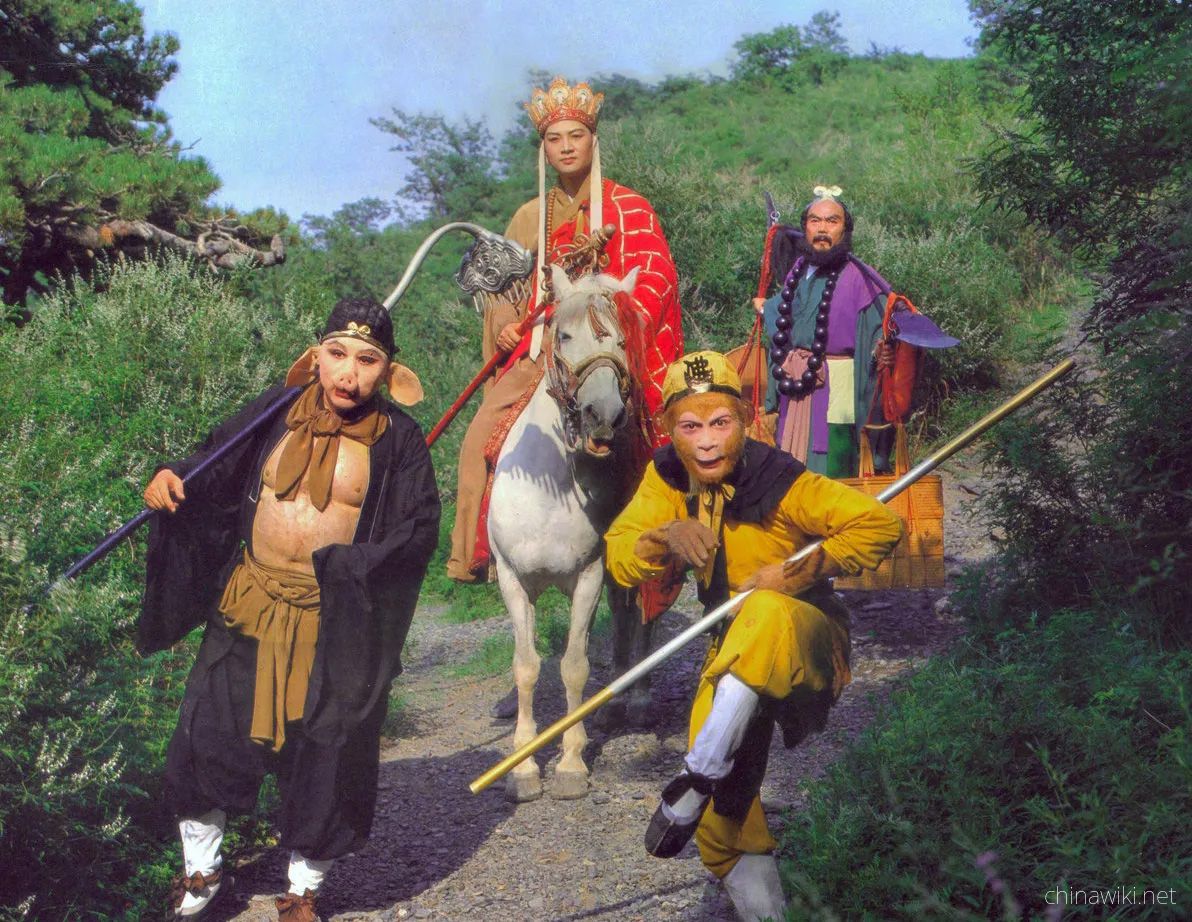
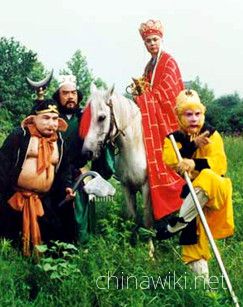
-
1.Qing Yu Nian Popular TV series in December 2019 China
Zhang Qing, a university student majoring in literary history, is familiar with classical masterpieces, but his thesis proposition of analyzing ancient literary history with modern ideas is not recogn
Time 2019-12-27 -
2.The Qin Empire (Da Qin Fu)
In the late Warring States period, the Qin family was dominant. King Zhaoxiang of Qin and King Xiaowen of Qin, who inherited the throne, died one after another. LV Buwei, a wealthy businessman, planned to usurp the state and helped Ying Yi,
Time 2021-02-06 -
3.TV play "crossing the Yalu River"
Crossing the Yalu River is a war drama directed by Dong Yachun, starring Tang Guoqiang and Ding yongdai, and starring sun Weimin, Wang Zhifei, Liu Zhibing, Yao Gang, Wang Ting, Wang Tonghui and Liu Tao.
Time 2021-02-06 -
4.The Journey to the West (Pilgrimage to the West)
Journey to the West is the first romantic novel written by Wu Chengen in the Ming Dynasty.The novel mainly tells the story of Monkey King, who met Tang Monk, Zhu Bajie, Sha Monk and White Dragon Horse after he was born to learn skills with Bodhi and made
Time 2022-09-21
